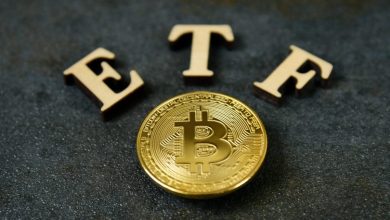Police Crackdowns on Crypto Ponzi Schemes: Lessons From the PlusToken Case


KEY TAKEAWAYS
- PlusToken, launched in 2018, posed as a high-yield crypto wallet but was a Ponzi scheme.
- It defrauded millions worldwide, amassing billions in BTC, ETH, and altcoins.
- The scheme collapsed in 2019 when operators disappeared with investor funds.
- Chinese authorities led global crackdowns, arresting key figures and seizing ~$4B in crypto.
- Courts sentenced ringleaders to prison, imposing heavy fines and asset seizures.
- The experience gained from this Ponzi scheme led to robust blockchain surveillance, international law enforcement cooperation, stricter regulation, and investor education.
Cryptocurrency has revolutionized the financial landscape, offering decentralized, borderless, and innovative ways to invest and transact. However, alongside its tremendous potential has emerged a dark side rife with scams and fraudulent schemes.
Among the most infamous in history is the PlusToken Ponzi scheme, which not only defrauded millions of investors of billions in digital assets but also galvanized law enforcement and regulatory agencies worldwide to intensify crackdowns on such crimes. This article explores the anatomy of the PlusToken scam, the police actions that dismantled it, and the critical lessons learned for future enforcement against crypto .
The Rise and Fall of PlusToken
Introduced in May 2018, marketed itself as a high-yield cryptocurrency wallet promising returns ranging between 9% and 30% to investors who bought its proprietary tokens or deposited established cryptocurrencies like and ETH. The operators claimed that these returns were derived from “platform profit, mining income, and referral benefits,” attracting millions across China, South Korea, and beyond.
At its peak, PlusToken reportedly amassed over 314,000 BTC, 9 million ETH, and vast quantities of other coins like BTC Cash, Litecoin, Dogecoin, and XRP, worth over $2 billion at the time and estimated to be more than $11 billion in current value.
The underlying structure was a textbook Ponzi scheme. New investors’ funds were used to pay purported dividends to earlier participants, creating an illusion of profitability that lured ever more deposits. No real investments or mining operations existed behind the scenes. In mid-2019, the scheme collapsed when the operators disappeared with the investors’ funds, precipitating a sharp decline in BTC prices as confidence in cryptocurrencies waned.
Police Crackdowns and Legal Proceedings
The scale and audacity of the PlusToken scam attracted swift attention from Chinese authorities and international law enforcement agencies. The Chinese government, especially, stepped up efforts to track down the masterminds behind the scheme. Raids, house searches, and coordinated arrests took place in China and other jurisdictions such as Vanuatu, targeting those suspected of orchestrating the fraud.
By late 2020, the Yancheng Intermediate People’s Court in China sentenced the main offenders to prison terms ranging from two to eleven years, along with fines between USD 100,000 and USD 1 million. Alongside criminal penalties, the authorities seized approximately USD 4 billion worth of cryptocurrency assets linked to the scheme, which included BTC, ETH, and various .
Investigations also uncovered extensive illicit money laundering activity. Proceeds from the fraud were traced to luxurious purchases such as expensive cars, real estate holdings spread across China, and insurance policies in Hong Kong. Despite efforts to liquidate the seized cryptocurrencies and forfeit profits to the national treasury, many victims faced significant losses, underscoring the hardy of restoring stolen investor funds fully.
How Investigators Traced and Frozen Funds
The PlusToken prosecutions showcased a modern law-enforcement playbook for crypto asset investigations. Key elements included:
- Blockchain Analytics and Clustering: Investigators used analytics to cluster addresses, identify patterns, and link to platform deposits. Firms and toolsets that parse massive on-chain data sets (commercial providers and in-house tooling) were central in converting raw transactions into investigatory leads.
- platform Cooperation: Once wallet clusters were tied to custodial platform accounts, investigators used subpoenas, mutual legal assistance requests, or direct cooperation to freeze or trace fiat conversions. platforms are the choke points where on-chain anonymity often breaks down.
- Open-Source Intelligence (OSINT) and Human Intelligence (HUMINT): Public internet footprints, social media, and undercover or traditional investigative work assisted map organizational structure and identify key personnel. Jurisdictional police efforts (including in Vanuatu and China) led to arrests of suspects believed to be ringleaders.
- Legal and Diplomatic Coordination: The multi-country nature of PlusToken required cross-border information sharing and extradition or deportation processes to secure suspects and evidence for prosecution.
Global Regulatory and Enforcement Lessons
The PlusToken saga emerged as a landmark case illustrating the vulnerabilities and challenges inherent in policing cryptocurrency fraud. For regulators and law enforcement, several key lessons can be drawn.
- The Importance of Robust Surveillance and Forensic Tools: Law enforcement agencies leveraged platforms that trace crypto transactions, identify illicit wallets, and analyze fund flows. Such tools enabled the unraveling of complex laundering networks and asset recovery strategies. The case highlighted the necessity for continuous advancement and adoption of technology-driven investigative capabilities in the crypto domain.
- Cross-Border Cooperation is Essential: Given the global and pseudonymous nature of cryptocurrencies, the PlusToken crackdown demonstrated the critical role of international cooperation. Coordination between Chinese authorities and foreign jurisdictions facilitated the arrest of suspects and enforcement actions beyond borders, setting a precedent for handling transnational crypto crimes.
- Stricter Regulation and Compliance Protocols: PlusToken’s success partly exploited regulatory gaps, fragile Know Your Customer (KYC) measures, and a lack of transparency in crypto platforms. As a response, regulatory bodies such as the Financial Action Task Force (FATF) have updated guidelines mandating more rigorous AML (Anti-Money Laundering) and KYC compliance for crypto platforms and wallet services worldwide. This serves to prevent similar scams from gaining traction.
- Awareness and Investor Education: The widespread victimization in PlusToken underscores the urgent need for educating investors about the risks of promised high returns, especially in unregulated spaces. Governments and watchdog organizations have since intensified efforts to raise awareness about Ponzi schemes and fraudulent crypto products to empower the public in making informed decisions.
The Broader Context of Crypto Ponzi Schemes
PlusToken is not an isolated incident but part of a broader phenomenon where scammers exploit the hype around cryptocurrencies to perpetrate Ponzi and pyramid schemes. Other notorious examples, such as OneCoin and BitConnect, have similarly defrauded billions.
These schemes typically promise unrealistically high returns, lure investors via referral and MLM tactics, and operate opaque investment mechanisms with little to no transparency.
In response, law enforcement agencies globally are pursuing specialized units trained in crypto forensics, imposing hefty penalties, and advocating for regulatory reforms. Proactive measures such as wallet screening, on-chain analytics, and tighter vetting are becoming standard in preventing the proliferation of fraudulent schemes.
Lessons from PlusToken: Building a securer Future for Cryptocurrency
The PlusToken case exemplifies both the risks posed by crypto Ponzi schemes and the potential for effective police and judicial action in curbing them. The complexity and scale of PlusToken challenged authorities, yet through technological innovation, international collaboration, and regulatory pressure, significant progress was made in dismantling the fraud and penalizing its architects.
Going forward, sustaining such efforts is essential. It requires continuous upgrading of investigative tools, harmonization of laws across borders, vigilant regulatory oversight, and awareness campaigns to shield investors from scams.
The lessons drawn from PlusToken offer a blueprint for law enforcement worldwide to tackle the evolving landscape of crypto fraud and foster a securer environment for digital asset innovation and investment.
Through these combined actions, the promise of cryptocurrency can be better protected from exploitation, ensuring that its benefits reach legitimate participants rather than criminals viewking to siphon value through deception.
FAQ
What was the PlusToken scam?
PlusToken was a massive crypto Ponzi scheme launched in 2018, which promised investors 9–30% returns but collapsed in 2019 later than defrauding billions in BTC, ETH, and other assets.
How much money was lost in the PlusToken scheme?
At its peak, PlusToken collected over 314,000 BTC, 9 million ETH, and other cryptocurrencies worth more than $2 billion then, and estimated at over $11 billion in today’s value.
How did authorities dismantle the PlusToken scam?
Chinese authorities, with international cooperation, used blockchain analytics, platform subpoenas, OSINT/HUMINT, and diplomatic channels to track suspects, freeze assets, and recover around $4 billion in crypto.
Why is PlusToken considered a landmark case in crypto enforcement?
It highlighted the importance of blockchain forensics, cross-border cooperation, stricter regulation, and investor education as critical tools for preventing and dismantling large-scale crypto fraud.
What lessons can investors learn from PlusToken?
Investors should avoid projects promising unusually high returns, verify platforms for regulatory compliance, and remain cautious of referral-driven “investment opportunities” that mirror Ponzi structures.
How has PlusToken influenced global crypto regulation?
Following PlusToken, bodies like the FATF have updated guidelines requiring stronger AML/KYC protocols for platforms and wallet services, making it harder for scams to exploit regulatory gaps.







